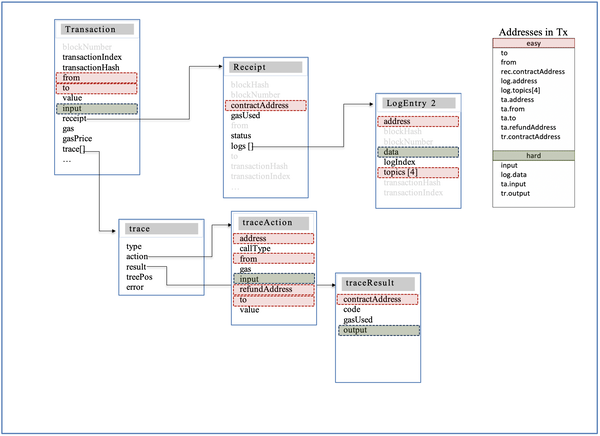Blockchain data
Ethereum consists of multiple different data models. TrueBlocks exposes them all.

TrueBlocks data
On its own blockchain data is an unintelligable blob of binary bytes. But, we all know there is an amazing collection of deeply interesting information contained therein. Thousands of people are trading, voting, expressing their preferences, making markets for valueless items every minute.
What interests us about this data are answers to questions such as:
- What exactly is going on?
- Where is my money?
- Didn’t I have some of those tokens somewhere?
- May I please just get a list of my transactions?
TrueBlocks allows you to query this type of information and more. Using the
chifra list option, one may list every detail of any transaction that happened
against one’s own wallet address (or anyone else’s for that matter).
The --articulate option, which is available on many commands, reanimates
or articulates the impossible-to-understand input and event data fields.
TrueBlocks even articulates trace data which reveals the deep history of
any transaction include multi-layer deep smart contract calls.
TrueBlocks works as easily with multiple related addresses at a time as it does with individual addresses. One can view entire asset balance histories, detailed voting histories for a DAO, or the ownership status on one’s POAPs and ENS names. We even allow exporting of Open Financial Exchange files which is what your bank uses to export your transactions to accounting software.
Consistent apis / interfaces
Each of the TrueBlocks endpoints and command-line tools are built on
the same core libraries (many of which are in Go). Our server (chifra serve)
uses the command line tools directly to complete many of its tasks, therefore
the interfaces are identical. Applications built on top of TrueBlocks have
a consistent, stable data interface.
Open source
Furthermore, TrueBlocks is fully open source. If you don’t like something, change it and make a PR (non-commercial use only). If you’re a commercial entity, feel free to make changes, but remember, you must either license the code separately or release your modifications under the same open source license. Please contact us about our licensing plans if you have a non-public, commercial use case.